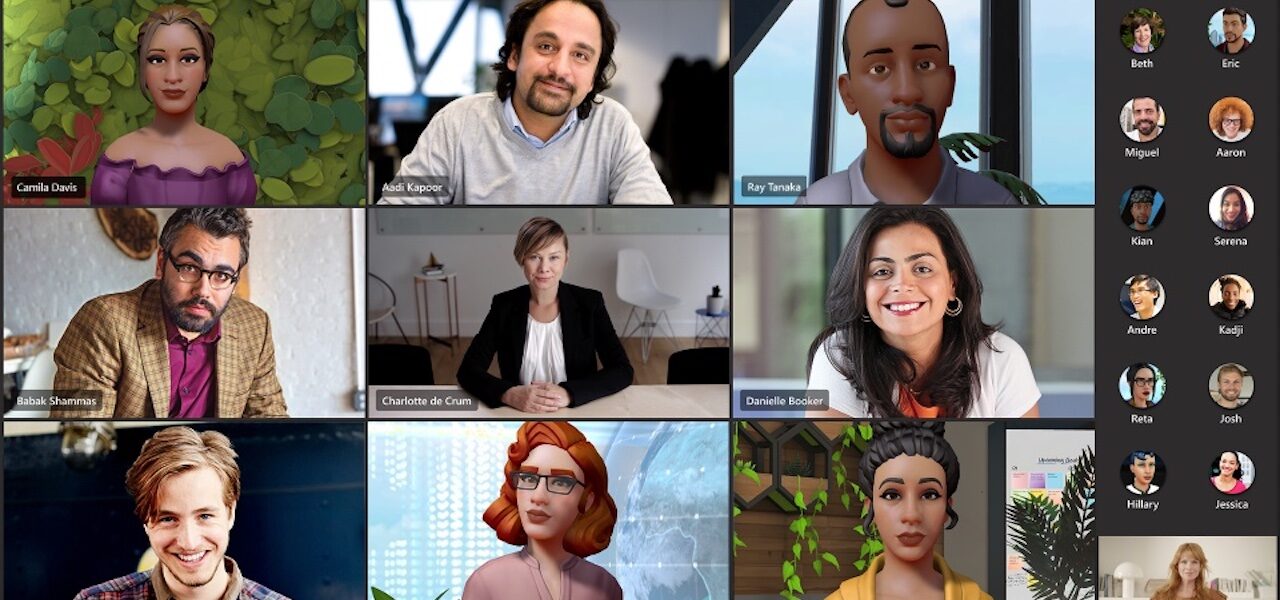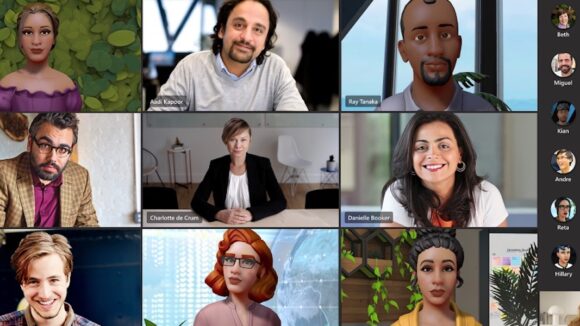

Microsoft Embraces Metaverse By Adding Animated Avatars To Teams
The metaverse doesn’t just belong to Meta (i.e. the company formerly known as Facebook). Not to be outdone by Mark Zuckerberg’s expansive vision of the future, Microsoft has announced that it, too, wants to coax users deeper into the digital realm.
The company will introduce animated avatars into Microsoft Teams, its video-conference platform, in the first half of 2022. These will be available in both conventional 2d and 3d vr meetings. Microsoft says its research suggests that people feel “more present and engaged in meetings” when cameras are off. These avatars, then, can substitute for real faces.
The avatars will be animated in real time in response to users’ vocal cues. In vr settings, they will be able to do other things, like raise their hands, according to the users’ behavior. Businesses will also be able to create virtual work spaces inside Teams for the avatars to inhabit.
Microsoft’s innovations are more modest than Meta’s, but this makes them easier to grasp. They also have the advantage of being based on existing tech, namely Mesh, an in-house framework for virtual and augmented reality unveiled earlier this year.
And the company has made it clear that this is only the beginning. In a blog post, Microsoft’s John Roach writes that the updates to Teams are “a gateway to the metaverse — a persistent digital world that is inhabited by digital twins of people, places, and things. Think of the metaverse as a new version — or a new vision — of the internet, one where people gather to communicate, collaborate, and share with personal virtual presence on any device.”
Teams head Jared Spataro made a similar point: “With 250 million people around the world using Teams, the introduction of avatars will be the first real metaverse element to seem real.”

.png)